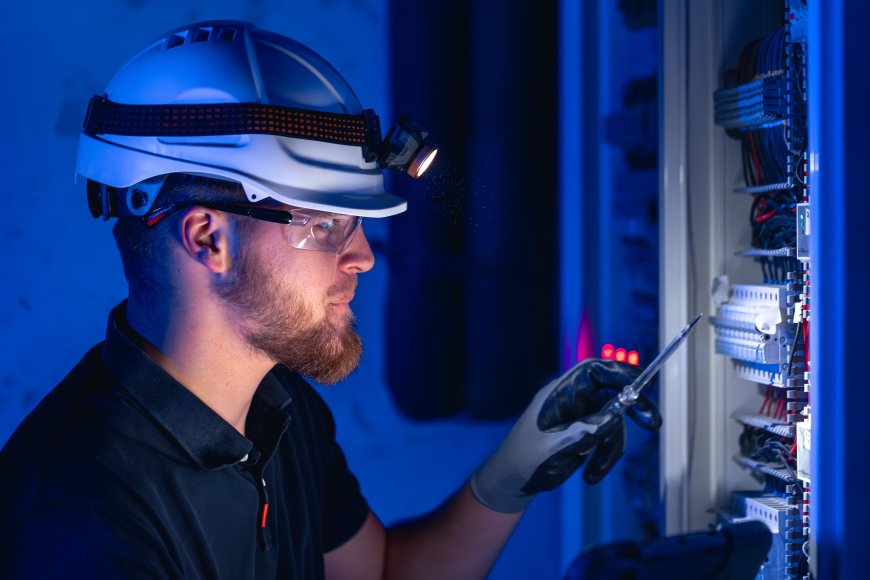Lighting, Alarms, and Life Safety: Key Electrical Considerations in Healthcare Environments

Ever stepped into a hospital and paid attention to the lights? Or noticed the alarm systems quietly standing by, waiting for their moment? Probably notand thats a good thing. In healthcare, if youre noticing these systems, it usually means somethings gone wrong.
Behind the scenes, however, a lot of brainpower goes into making sure nothing ever does. And thats where healthcare electrical contractors come in. These aren't your typical tighten-a-fuse-and-go electricians. They work in environments where one small mistake could impact lives, not just light bulbs.
Whether it's designing backup systems that kick in before anyone blinks or fitting lighting that helps patients heal faster, it's all part of the job.
Lighting That Heals, Not Just Illuminates
Lighting in medical spaces isnt about aesthetics. Its about precision, safety, and, believe it or not, psychology.
In areas like surgical theatres or diagnostic labs, poor lighting isnt just an inconvenienceits dangerous. Surgeons dont get second chances, and neither should the lighting systems above them.
But beyond sharp visuals, lighting plays a part in how patients feel. Ever been in a dim, yellowish waiting room that made you uneasy for no good reason? Imagine trying to recover there. Now flip thatmodern lighting systems that simulate natural daylight cycles can help patients sleep better, feel less stressed, and recover faster. Sounds a bit out-there, but its backed by solid science.
Theres also the issue of emergency lighting. Its easy to forget until the power goes out. In a hospital, youve got secondsmaybe lessto kick in full illumination along corridors, exits, and critical care units. That kind of reliability doesnt happen by accident. It takes meticulous planning, compliant design, and regular testing.
Alarms That Cut Through Chaos
Hospitals are loud. Theres beeping, buzzing, chatting, wheeling, clicking... and then there are alarms.
But not all alarms are created equal. Some alerted staff to a fire. Others flag an issue with the oxygen supply. Then theres the nurse call buttonthe lifeline between a patient in distress and the people trained to help.
The real challenge? Making these systems loud enough to be heard instantly, without turning the entire place into a war zone of noise. Too many alerts, and staff might start tuning them out. Too few, and the system isnt doing its job. Its a tightrope walk.
Integrating all these alarms, ensuring they speak to each other, and routing them to the right response teams? Thats where specialist know-how becomes critical. And yeah, it takes more than a few manuals and a good toolbox.
Life Safety: The Silent Backbone
Heres a scenario. Power cuts. Youre mid-surgery. Monitors flicker. You cant see your instruments. Ventilators stall. Sounds terrifying, right?
Now picture this instead: The mains failbut instantly, a silent generator roars to life. Emergency circuits engage. Lights flicker for half a second before steadying. No panic. No drama. Just a smooth handover.
Thats life safety infrastructure. The unsung hero of healthcare. It involves:
-
Automatic Transfer Switches (ATS) to shift power loads in real time
-
Uninterruptible Power Supplies (UPS) to keep essential machines running without even a blink
-
Zoned electrical design so only critical areas receive backup powerconserving fuel, avoiding overloads
And the thing is, each facility needs a different setup. What works in a central hospital may be completely wrong for a rehab clinic or a dementia care unit. Thats why cookie-cutter approaches just dont cut it here.
Navigating the Maze of Electrical Installation in London
If youve ever been involved in electrical installation in London, youll know it's a bit of a circus. A very serious, code-compliant circus.
You're working in old Victorian shells one day and shiny new glass towers the next. Space is tight. Access is worse. And the paperwork? Endless. For healthcare facilities, those challenges multiply.
Take retrofitting a critical care unit in a 19th-century building: ceilings too low for containment trays, walls too fragile for surface-mounted gear, but absolutely no room for error. Or installing new alarm systems in a mental health ward without disrupting patients. Its a balancing actand not one to leave to generalist contractors.
Thats why healthcare clients in London need more than electricians. They need adaptable professionals who understand the layout, the compliance laws, the patient experience, and the quirks of old architecture and new tech.
Choosing the Right People for the Job
Theres a reason hospitals dont hire on a whim. The same goes for picking electrical partners.
Healthcare electrical contractors need more than qualificationsthey need a deep understanding of HTM (Health Technical Memoranda), BS 7671 regulations, and a genuine sense of whats at stake.
Heres a quick checklist:
-
Experience with live environments Can they work around ongoing care without disruption?
-
Backup & testing know-how Are they planning for failure, not just success?
-
Integrated systems knowledge Can they make fire, nurse call, gas alarms, and lighting work together?
-
24/7 response Because if something goes wrong at 3 am, youll need themfast.
Honestly, the best contractors are the ones who ask all the right (and often annoying) questions before they even quote. They're not being difficulttheyre making sure it works when it matters most.
Final Thoughts: A Quiet Kind of Heroism
Lets face it. Nobody claps for the lights staying on. But maybe they should.
Behind every smoothly running ward, every emergency that wasnt a disaster, theres a team making invisible things happen. From lighting that calms, to alarms that scream just when they need to, to systems that carry on even when the grid gives uphealthcare electrics are all about planning for the worst while hoping for the best.
So yeah, next time you're in a clinic, spare a nod to the quiet brilliance of a well-installed panic button. Or that little green light above the door. That stuff saves lives. Silently.
































